
HIGH ALTITUDE MEDICINE & BIOLOGY
Scope & Guideline
Advancing Understanding in High-Altitude Biology
Introduction
Aims and Scopes
- High-Altitude Physiology:
Research on how the human body adapts to low oxygen environments, including studies on pulmonary and cardiovascular responses. - Altitude-Related Illnesses:
Investigations into conditions such as Acute Mountain Sickness (AMS), High-Altitude Pulmonary Edema (HAPE), and Chronic Mountain Sickness (CMS), focusing on prevention, diagnosis, and treatment. - Impact of Environmental Factors:
Studies examining how various environmental factors at high altitudes, such as reduced oxygen levels, temperature changes, and UV exposure, affect human health. - Women's Health at High Altitude:
Exploration of gender-specific health issues and responses to altitude, including the effects of the menstrual cycle and pregnancy. - Nutrition and Metabolism:
Research on nutritional adaptations and metabolic changes that occur at high altitudes, including the effects of altitude on glucose and lipid metabolism. - Psychosocial Factors:
Examination of how living at high altitudes influences mental health and cognitive function, along with sociocultural adaptations.
Trending and Emerging
- COVID-19 and High Altitude:
An increasing number of studies are focusing on the interaction between COVID-19 and high-altitude health, exploring how altitude may influence the severity and outcomes of the disease. - Women's Health Research:
There is a growing emphasis on women's health issues at high altitudes, including the effects of menstrual cycles and pregnancy, indicating a trend toward more gender-focused research. - Molecular and Cellular Mechanisms:
Emerging research is delving into the molecular and cellular adaptations to hypoxia, with studies investigating gene expression and signaling pathways affected by altitude. - Technological Innovations in Research:
The use of advanced technologies and methodologies, such as proteomics and genomics, is becoming more prevalent in high-altitude studies, enhancing the understanding of physiological adaptations. - Psychological and Cognitive Effects:
Research exploring the psychological and cognitive impacts of high-altitude living is gaining traction, emphasizing the importance of mental health in high-altitude populations.
Declining or Waning
- Traditional Medicine Practices:
Research on traditional and alternative medicine approaches for altitude-related illnesses has seen reduced attention, possibly overshadowed by more evidence-based clinical studies. - General Population Studies:
There is a noticeable decline in studies focusing on general population health at high altitudes, with a shift towards more specific clinical or physiological investigations. - Historical Perspectives:
Papers providing historical context or reviews of past research on high-altitude medicine have become less frequent, as the focus shifts towards contemporary issues and innovative research.
Similar Journals

Journal of Comparative Physiology B-Biochemical Systems and Environmental Physiology
Exploring the Interactions of Life and EnvironmentJournal of Comparative Physiology B-Biochemical Systems and Environmental Physiology, published by SPRINGER HEIDELBERG in Germany, stands at the forefront of research in the fields of physiology, biochemistry, and ecological systems. With a commitment to fostering interdisciplinary communication, this journal has been a vital resource since its inception in 1974, converging scientific exploration through the lens of biochemical mechanisms and environmental adaptations in animal systems. Renowned for its rigorous peer-review process, it has achieved impressive rankings, including Q2 in Animal Science and Zoology and Ecology, Evolution, Behavior and Systematics, reflecting its substantial impact within these disciplines. The journal aims to disseminate cutting-edge research that advances our understanding of physiological and biochemical processes while addressing contemporary environmental challenges. While currently operating on a traditional access model, the journal's contributions are crucial for researchers, professionals, and students seeking profound insights into the complex interactions between organisms and their environments.
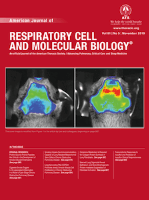
AMERICAN JOURNAL OF RESPIRATORY CELL AND MOLECULAR BIOLOGY
Leading the Charge in Respiratory Cell ResearchThe AMERICAN JOURNAL OF RESPIRATORY CELL AND MOLECULAR BIOLOGY, published by the esteemed American Thoracic Society, is a premier platform dedicated to advancing knowledge in the fields of pulmonary and respiratory medicine, cell biology, and clinical biochemistry. With an impressive impact factor and recognition as a Q1 journal in multiple categories for 2023, it ranks among the top tier of scholarly publications, evidencing its influence and contribution to the scientific community. Since its inception in 1989, the journal has provided a critical forum for researchers and professionals to disseminate innovative findings and pivotal reviews, driving forward the frontiers of respiratory biology. While the journal currently operates under traditional access mechanisms, it seeks to bridge gaps in research by presenting high-quality articles that address vital health challenges. As a key resource for both established researchers and emerging scholars in molecular biology and respiratory science, this journal plays a pivotal role in shaping the future of respiratory health advancements.

Undersea and Hyperbaric Medicine
Diving Deep into Medical InnovationUndersea and Hyperbaric Medicine is a pivotal journal published by the Undersea & Hyperbaric Medical Society Inc., focusing on the advanced field of undersea and hyperbaric medical research. It has served the scientific community since its inception in 1993, and is recognized for its commitment to disseminating peer-reviewed articles that address both the clinical and scientific aspects of hyperbaric medicine and related disciplines. The journal is indexed in various databases and classified in key quartiles, ranking Q3 in Medicine (miscellaneous) and Q4 in Physiology (medical) as of 2023, making it an essential resource for professionals engaged in these specialized areas. Although the journal does not currently offer open access, its implications and contributions to the fields of pulmonary and respiratory medicine and physiology are substantial, with a Scopus rank indicating its relevance despite some competitive challenges. This publication serves as a vital platform for researchers, allows for the exploration of novel therapies, and promotes the dissemination of knowledge critical for advancements in medical practice related to undersea and hyperbaric environments.
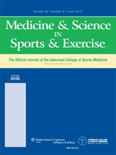
MEDICINE & SCIENCE IN SPORTS & EXERCISE
Advancing the frontiers of sports medicine and exercise science.MEDICINE & SCIENCE IN SPORTS & EXERCISE is a premier journal published by Lippincott Williams & Wilkins, dedicated to advancing the fields of sports medicine, exercise physiology, orthopedics, and physical therapy. With a significant history dating back to 1969, this journal provides a critical platform for disseminating cutting-edge research and clinical insights that shape contemporary sports science. Recognized for its rigorous peer-review standards, it boasts an impressive impact factor and ranks in the top quartile (Q1) across pivotal categories including Orthopedics and Sports Medicine, Physical Therapy, and Rehabilitation. Researchers and healthcare professionals will find it an invaluable resource for the latest findings and trends that inform practice and enhance athletic performance. The journal is available in both print and digital formats, ensuring accessibility for its audience worldwide. By fostering a rich dialogue among scientists, practitioners, and students, MEDICINE & SCIENCE IN SPORTS & EXERCISE solidifies its importance in the evolving landscape of sports health and exercise research.

Diving and Hyperbaric Medicine
Bridging Research and Practice in Diving SafetyDiving and Hyperbaric Medicine is a premier journal published by the SOUTH PACIFIC UNDERWATER MEDICAL SOCIETY that focuses on the critical intersection of diving medicine and hyperbaric physiology. With an ISSN of 1833-3516, this journal has become an essential resource for researchers, healthcare professionals, and students interested in the fields of public health, environmental health, and occupational health, as reflected in its Q3 ranking in the 2023 category quartiles. Since its inception in 2006, it has consistently provided high-quality peer-reviewed articles that address the latest clinical practices, research findings, and technological advancements in underwater medicine. Supporting a broad readership with its commitment to knowledge dissemination, Diving and Hyperbaric Medicine serves as a valuable platform for sharing innovations and challenges faced in hyperbaric treatments and diving safety protocols. Although not currently open access, it remains a recognized journal with significant contributions to the field, housed in Australia, at C/O AUSTRALIAN & NEW ZEALAND COLL ANAESTHETISTS, 630 ST KILDA RD, MELBOURNE VIC 3004, AUSTRALIA. Join the academic discourse and explore insights vital for improving diving safety and health outcomes in this dynamic domain.

JOURNAL OF EVOLUTIONARY BIOCHEMISTRY AND PHYSIOLOGY
Pioneering Research in Evolutionary Biochemistry and PhysiologyJOURNAL OF EVOLUTIONARY BIOCHEMISTRY AND PHYSIOLOGY, published by PLEIADES PUBLISHING INC, is a pivotal periodical that delves into the intricate relationships between biochemical processes and evolutionary dynamics. With its ISSN 0022-0930 and E-ISSN 1608-3202, this journal serves as a comprehensive platform for researchers, professionals, and students dedicated to understanding the physiological adaptations and biochemical mechanisms influenced by evolutionary pressures. Although it is not an open access journal, it offers valuable insights across its historically significant coverage spanning from 1972 to 2017, making it an essential resource for those working in agricultural, biological, and molecular sciences. Despite its current Scopus rankings revealing limited visibility within its fields, the journal remains committed to fostering scholarly dialogue and advancing knowledge in the realm of evolutionary biochemistry, especially for those exploring the ecological, genetic, and integrative physiological aspects of life.
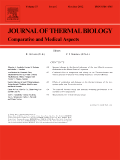
JOURNAL OF THERMAL BIOLOGY
Decoding Thermal Dynamics in Biological ResearchJOURNAL OF THERMAL BIOLOGY, published by PERGAMON-ELSEVIER SCIENCE LTD, is a leading international journal dedicated to the interdisciplinary study of thermal biology, exploring the impact of temperature on biological systems. Established in 1975 and continuing its vital contributions through 2024, the journal has consistently ranked in the upper quartiles of its categories, notably achieving Q1 in Agricultural and Biological Sciences, Q2 in Biochemistry, and Q3 in both Developmental Biology and Physiology as of 2023. With an impressive Scopus ranking reflecting its influence and reach within key biological sciences fields, this journal serves as an essential platform for researchers, professionals, and students interested in thermal impacts on biological processes. While the journal does not offer open access, it remains a pivotal resource through its robust peer-reviewed content, fostering academic discourse and advancing knowledge at the intersection of thermal dynamics and biological research.

Zeitschrift fur Pneumologie
Fostering Collaboration for Lung Health AdvancementZeitschrift für Pneumologie is a pivotal journal in the field of Pulmonary and Respiratory Medicine, published by Springer Heidelberg, a renowned name in academic publishing. With its ISSN number 2731-7404, it serves as a vital platform for disseminating innovative research and clinical studies relevant to lung health and diseases. This German-based journal aims to bridge the gap between research and practice, encouraging submissions that advance knowledge in respiratory medicine, including pathophysiology, treatment modalities, and patient care strategies. Although currently categorized in the Q4 quartile within its field, its commitment to quality research and emerging insights positions it as an essential resource for researchers, healthcare professionals, and students dedicated to improving respiratory health. The journal operates within the convergence period from 2022 to 2024, promising a dynamic evolution of its content. With limited open access availability, it encourages readership and contribution from its audience, fostering a collaborative academic environment.
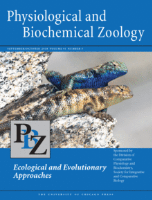
PHYSIOLOGICAL AND BIOCHEMICAL ZOOLOGY
Bridging Disciplines for a Deeper Understanding of ZoologyPhysiological and Biochemical Zoology is a distinguished peer-reviewed journal published by University of Chicago Press, focusing on the interrelated fields of animal physiology, biochemistry, and zoology. With a strong commitment to advancing scientific understanding, this journal serves as a vital resource for researchers, professionals, and students alike, providing a platform for the latest findings and advancements in the field. Ranking in the top quartile (Q1) in Animal Science and Zoology as of 2023, and showcasing a substantial convergence of historical data from 1999 to 2023, its impact in the academic community is underscored by its engagement with high-quality research. While it also appears in the third quartile for Biochemistry and Physiology, the journal successfully integrates these disciplines, reflecting the complexity of biological systems. Available for reading via various access options, this journal is essential for anyone seeking to deepen their knowledge or contribute to the field of Zoological sciences.
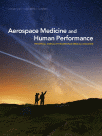
Aerospace Medicine and Human Performance
Exploring the Intersection of Medicine and FlightAerospace Medicine and Human Performance is an influential journal published by the Aerospace Medical Association, serving as a vital resource for researchers and professionals dedicated to the study of human performance within the realms of aerospace environments. With an ISSN of 2375-6314 and an E-ISSN of 2375-6322, this journal has garnered attention since its inception in 2015 and is dedicated to the dissemination of innovative research, reviews, and case studies that address the complexities of human factors in aviation and space travel. Despite being classified in the Q4 quartile in both Medicine (Miscellaneous) and Public Health, Environmental and Occupational Health categories as of 2023, and its respective Scopus rankings showing opportunities for growth, the journal plays a critical role in bridging gaps in knowledge and promoting advancements in medical practices and safety standards in aerospace contexts. The journal operates under an Open Access model, ensuring that valuable research is readily available to a diverse audience. As it converges into the years up to 2024, it remains committed to enhancing the collaboration and communication within the aerospace medical community.